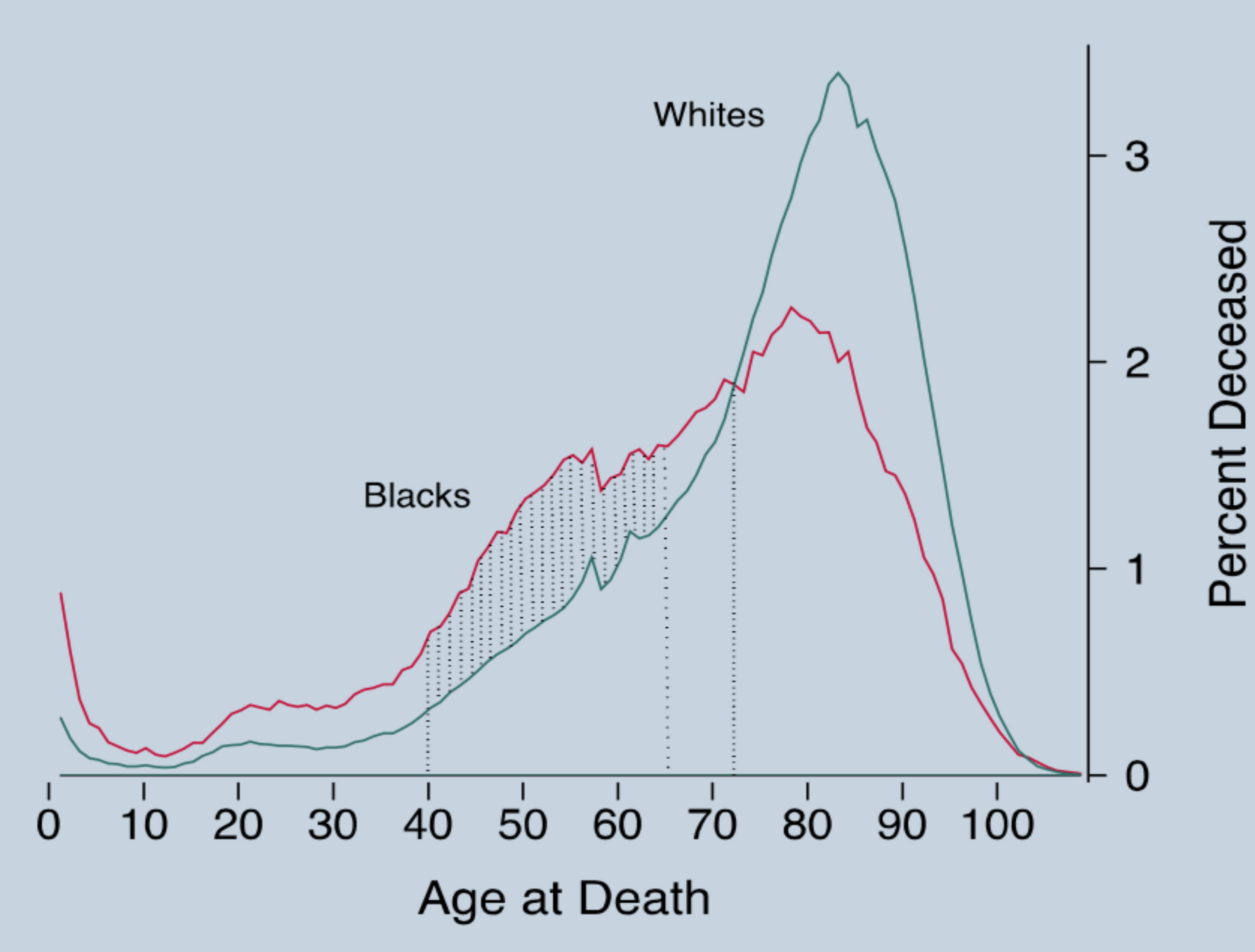“Black Lives Matter: Differential Mortality and the Racial Composition of the U.S. Electorate, 1970–2004”
An important source of participatory advantage comes from an usually overlooked suspect: premature death. Black people, for example, die sooner than white people due to social, not genetic, factors. And because the dead cannot vote, premature mortality is a powerful force that dilutes the political voice of the poor and the black community.
Figure 1 shows the age-at-death distribution of whites and blacks in 2004. It shows that blacks consistently die at higher rates than whites throughout their lifetime (the life expectancy of blacks in 2004 was 73 years). It also shows that the racial mortality gap is larger between the ages of 40 and 65—when socioeconomic differences amplify.

We calculated the total number of votes lost to excess mortality among black people between 1970 and 2004. Our results show that 2.7 million blacks should not have died between 1970 and 2004 if they had the mortality rate of their similar whites. Of these, 1.9 million would have survived to 2004, of which over 1.7 million would have been of voting age. Over 1 million black votes were not casted in the 2004 presidential election due to excess mortality. Even though these votes would not have been enough to change the presidential election outcome in 2004, we found that the votes lost to excess mortality among the black community would have changed the outcome of 7 senatorial and 11 gubernatorial elections between 1970 and 2004.
This paper was recently published in Social Science & Medicine.
